The Micro-Nano Innovation Lab ("mini lab") investigates multidisciplinary approaches to develop new intelligent sensing and robotic strategies in micro/nano scales.
What we do
The Micro-Nano Innovation Lab ("mini lab") investigates multidisciplinary approaches to develop new intelligent sensing and robotic strategies in micro/nano scales. We study nanotechnology, light-matter interactions, micro-particle dynamics, microscale fluid dynamics, and bioengineering to reach our goal. The research involves the design and manufacture of micro/nano systems for diagnostics (e.g. infections, cancer, neurodegenerative diseases) and microscopic therapies/surgeries (e.g. localised drug delivery, novel minimally invasive procedures).
Why it is important?
Timely identification of illnesses, less intrusive interventions, and precise/personalised treatments in challenging areas within our bodies, like narrow blood vessels, are essential technologies for improved healthcare management. The foundation for empowering these technologies lies in the development of devices capable of sensitively detecting disruptions in microenvironments that impact normal physiology and of precisely addressing these issues via targeted drug delivery, surgery, etc. at the cellular and molecular levels (micro/nano scales). Understanding the pathophysiology and engineering of the designs and functionalities of such devices accordingly is, thus, vital to enhancing current medical technology. Also, this has the potential to drive the development of advanced medical micro-robots with integrated sensing and therapeutic capabilities, offering new opportunities for future advancements in healthcare.
How can it benefit patients?
Early detection of diseases followed by minimally invasive, targeted and personalised therapy can have evident advantages for patients in terms of prognosis, health management, and economic implications. First, it can reduce excessive physical and biochemical alterations to the microenvironments, e.g., scarring after resection, antimicrobial resistance after antibiotics administration, etc., offering a better prognosis with fewer side effects. Micro/nanodevices can also be engineered to be implantable, enabling long-term health monitoring and treatment. Finally, the localised and precise manner of the technology allows efficient planning of the optimal procedures and accurate dosage, resulting in reduced cost.
Meet the team
Results
- Showing results for:
- Reset all filters
Search results
-
Journal articleQin H, Xu Y, Kim J, et al., 2014,
The effect of structure on the photoactivity of a graphene/TiO<inf>2</inf> composite
, Materials Science and Engineering: B, Vol: 184, Pages: 72-79, ISSN: 0921-5107Graphene/TiO2 composites have been investigated as promising novel photoactive materials. Graphene can slow the recombination of electron-hole pairs and act as a strong electron-collector in the graphene/TiO2 composite system. We designed and prepared four different structures of graphene/TiO2 composite film by chemical vapor deposition (CVD) and aerosol technique. The structure of the graphene/TiO2 composite had a significant effect on the photoactive properties, including the photocurrent and resistance under UV illumination. For the different composite structures, the presence of oxygen and water molecules, as well as the photo-generated electron collection efficiency, were the key factors that affect the photoactive properties. More importantly, the composite structure was a decisive factor for the stability of photocurrent and resistance. The composite of reduced graphene oxide (RGO) and TiO2 with irregularly stacked structure had a higher and stable photoresponse. This study could provide a basis for the structural design of photoelectrical devices based on graphene/TiO2. © 2014 Elsevier B.V. All rights reserved.
-
Conference paperKim JA, Qin H, Hwang T, et al., 2014,
Novel environmental monitoring sensor technologies with fiber optics and various sensing layers
In this study, we have suggested various sensors for aerosol, VOCs (volatile organic compounds), and biomolecules detecting with diverse sensing layers such as, tetraethylorthosilicate (TEOS), thymol blue, polypyrrole, graphene, graphene oxide (GO), reduced graphene oxide (rGO), DNA, and so on. Every sensors have shown very interesting sensing characteristics with good performances. Steadily, we are proceeding various fiber optic sensors with fascinating sensing layers and mechanisms as well.
-
Conference paperKim JA, Hwang T, Dugasani SR, et al., 2014,
Functional Graphene Composite Films for Surface Plasmon Resonance Sensor Technology
, 13th IEEE Sensors Conference, Publisher: IEEE, ISSN: 1930-0395 -
Journal articleGnapareddy B, Kim JA, Dugasani SR, et al., 2014,
Fabrication and characterization of PNA-DNA hybrid nanostructures
, RSC ADVANCES, Vol: 4, Pages: 35554-35558, ISSN: 2046-2069- Author Web Link
- Cite
- Citations: 5
-
Conference paperHwang T, Kim JA, 2014,
Glucose Waveguide Sensor Based on Graphene
, 13th IEEE Sensors Conference, Publisher: IEEE, ISSN: 1930-0395 -
Journal articleKim JA, Hwang T, Dugasani SR, et al., 2013,
Graphene based fiber optic surface plasmon resonance for bio-chemical sensor applications
, SENSORS AND ACTUATORS B-CHEMICAL, Vol: 187, Pages: 426-433, ISSN: 0925-4005- Author Web Link
- Cite
- Citations: 114
-
Journal articleHwang T, Kim JA, Kulkarni A, et al., 2013,
Graphene photo detector with integrated waveguide biochemical sensors
, SENSORS AND ACTUATORS B-CHEMICAL, Vol: 187, Pages: 319-322, ISSN: 0925-4005- Author Web Link
- Cite
- Citations: 4
-
Journal articleKulkarni A, Kim B, Dugasani SR, et al., 2013,
A novel nanometric DNA thin film as a sensor for alpha radiation
, SCIENTIFIC REPORTS, Vol: 3, ISSN: 2045-2322- Author Web Link
- Cite
- Citations: 28
-
Journal articleSamal M, Mohapatra P, Subbiah R, et al., 2013,
InP/ZnS-graphene oxide and reduced graphene oxide nanocomposites as fascinating materials for potential optoelectronic applications
, NANOSCALE, Vol: 5, Pages: 9793-9805, ISSN: 2040-3364- Author Web Link
- Cite
- Citations: 24
-
Journal articleSome S, Kim J, Lee K, et al., 2012,
Highly air-stable phosphorus-doped n-type graphene field-effect transistors.
, Adv Mater, Vol: 24, Pages: 5481-5486Phosphorus-doped double-layered graphene field-effect transistors (PDGFETs) show much stronger air-stable n-type behavior than nitrogen-doped double-layered graphene FETs (NDGFETs), even under an oxygen atmosphere, due to strong nucleophilicity, which may lead to real applications for air-stable n-type graphene channels.
This data is extracted from the Web of Science and reproduced under a licence from Thomson Reuters. You may not copy or re-distribute this data in whole or in part without the written consent of the Science business of Thomson Reuters.
Contact Us
The Hamlyn Centre
Bessemer Building
South Kensington Campus
Imperial College
London, SW7 2AZ
Map location



